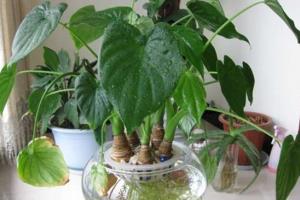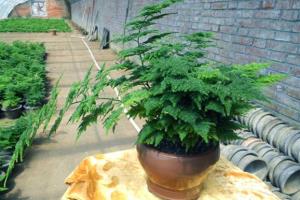Points for attention when changing soil for Cymbidium
To the chagrin of many flower friends, the gentleman orchid is easy to break its roots or don't know how to change it. Are you afraid that Junzhu Orchid has changed the soil and lost its roots? According to these problems, the editor will do a summary of matters needing attention for the change of soil in the orchid, hoping that this can solve the problems for everyone.

1. The time to change the soil: generally speaking, the orchid has to change the basin once a year, which is more conducive to the growth of the orchid, but it does not mean that it can be changed at any time. The soil change had better be carried out in spring and autumn, because the temperature is suitable at this time. Cymbidium grows vigorously and will not affect its growth because of the change of soil.
According to the actual situation of this area, Hua you can turn the pot and change soil from March to April or from August to September, when the weather is warm and cool (pay attention to the difference between the north and the south, the south is appropriately delayed), and the temperature is moderate, which is the second exuberant growth period of Cymbidium. According to the growth of the plant, the grower can turn the pot in autumn in the middle of August.
2. Avoid changing soil as far as possible during flowering: it should be noted that after archery, or during the budding and flowering stage, it is best not to change soil, because the plant needs more nutrients at this stage, and the continuous supply of nutrients will be affected by the operation of changing soil. However, if rotten roots or yellow leaves have to be changed due to poor soil quality, care should be taken not to break up the tuo and minimize the loss caused by the change of soil.
3. Avoid root injury: when taking out the clump of soil, be careful not to break the lump of soil so as not to damage the root system. Peel off the soil gently and remove the senescent and rotten fleshy root (but there is no rotten fleshy root. No matter how long it is, it cannot be cut off, because these fleshy roots and tips have a lot of root hairs, which can not only absorb water and nutrients, but also secrete a variety of acids and dissolve insoluble nutrients in the soil. Expand absorption. If it is cut off, although the plant will not die, but it will certainly affect the growth. 4. Serving basin: after changing the soil, the orchid should be placed in the shade for about 10 days to slow down the water evaporation and gradually restore its vitality. After 10 days, it can gradually increase the light.
5. The bigger the basin, the better: prepare a suitable special basin according to the size of the orchid (especially the number of roots) and avoid using large pots to grow small orchids.
The gentleman orchid has a lot of knowledge to change the soil, if it is accidentally broken, cut off the rotten part, and then maintain it for a few days according to the daily habits of the gentleman orchid, you can basically grow new roots.
- Prev

The Culture method of Water Culture dripping Guanyin points for attention of Water Culture dripping Guanyin
The Culture method of Water Culture dripping Guanyin points for attention of Water Culture dripping Guanyin
- Next

Culture methods and matters needing attention of asparagus starting from understanding asparagus
Culture methods and matters needing attention of asparagus starting from understanding asparagus
Related
- Wuhan Hospital Iron Tree Blooming Result Was Instantly Frightened by the Gardener Master
- Which variety of camellia is the most fragrant and best? Which one do you like best?
- What is the small blue coat, the breeding methods and matters needing attention of the succulent plant
- Dormancy time and maintenance management of succulent plants during dormancy
- Minas succulent how to raise, Minas succulent plant pictures
- What are the varieties of winter succulent plants
- How to raise succulent plants in twelve rolls? let's take a look at some experience of breeding twelve rolls.
- Attention should be paid to water control for succulent plants during dormant period (winter and summer)
- Watering experience of twelve rolls of succulent plants
- Techniques for fertilizing succulent plants. An article will let you know how to fertilize succulent plants.

